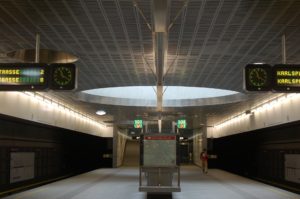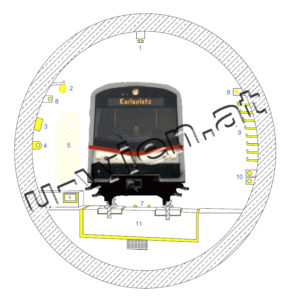Undergrounds are not only an important part of the public transport system in big cities, but also fascinating symbols of urban mobility and development. In this article, we explore the fascinating world of world-famous subways, their history, architectural beauty, technical innovation and cultural significance. From New York to Tokyo, from London to Moscow, these subways have the potential to improve the quality of life for millions of people and become cultural icons.
The underground as an urban phenomenon
The subway is an amazing achievement of modern urban planning. It provides an efficient and environmentally friendly way to transport large numbers of people through densely populated urban areas. In the face of increasing traffic congestion, environmental concerns, and the need for sustainable transportation, metros have become the lifeline of cities around the world. Each city with a metro has its own history and dynamics that have shaped and enriched urban life.
The birth of the metro: the London Underground
The world’s first subway railroad was opened in London. The London Metropolitan Railway began operating in 1863, connecting Paddington Street station with Farringdon Street station. This milestone in transport history marked the beginning of a new era in public transport. The London Underground developed rapidly and became a model for other cities that also wanted to establish an underground transport system.
Architectural gems of the subway
In addition to their function as a means of transportation, many subways are also architectural gems. The design of subway stations is often undertaken by renowned architects and artists, who create impressive and unique spaces. Take, for example, Stockholm’s tunnel station, which has been called “the world’s longest art gallery,” or Moscow’s magnificent metro station, which is adorned with marble, statues and ornate ceilings. These architectural gems are not only functional spaces, but also cultural attractions that leave a lasting impression on tourists and locals alike.
The technical development of the metro
Technical development did not stop at the metro. The first metros were steam-powered, then electric, and finally modern metros with advanced automation systems. The introduction of automatic train control, advanced safety systems and real-time passenger information have made metros safer, more efficient and more user-friendly. Thanks to technological advances, some subways can now operate automated trains, further increasing efficiency.
Subways as cultural icons
In many cities, the subway has become a symbol and a cultural icon. The New York subway is a case in point. With its distinctive yellow color and iconic “subway” logo, it has become one of the city’s most recognizable symbols. Another example is the Tokyo Metro, which symbolizes the efficiency and discipline of Japanese culture with its futuristic design and high punctuality. These subways are not only a means of transportation, but also part of the city’s pride and identity.
Social significance of subways
Subways also play an important social role in cities. They are an important part of social life, allowing people to travel to work, meet friends and family, and enjoy leisure activities. In addition, subways promote social integration as people from different social and cultural backgrounds come together in the limited space of a subway.
Future challenges and opportunities
Despite its importance and attractiveness, the subway faces challenges. Financing and building new subway lines can be both expensive and complex. In addition, existing subways require constant modernization and maintenance to ensure reliable and safe operations. Developing new technologies, integrating renewable energy sources, and promoting sustainable development are future opportunities for metro infrastructure.
Summary
World-famous subways are more than just transportation systems. They are cultural icons, architectural masterpieces and social lifelines. From their birth in London to their current worldwide popularity, subways have fundamentally changed the way people travel and live in metropolitan areas. Their appeal lies in their functionality and aesthetics, their technological development and their social significance. The subway connects not only metropolises, but also people and cultures, and it will undoubtedly continue to play an important role in our cities in the future.



